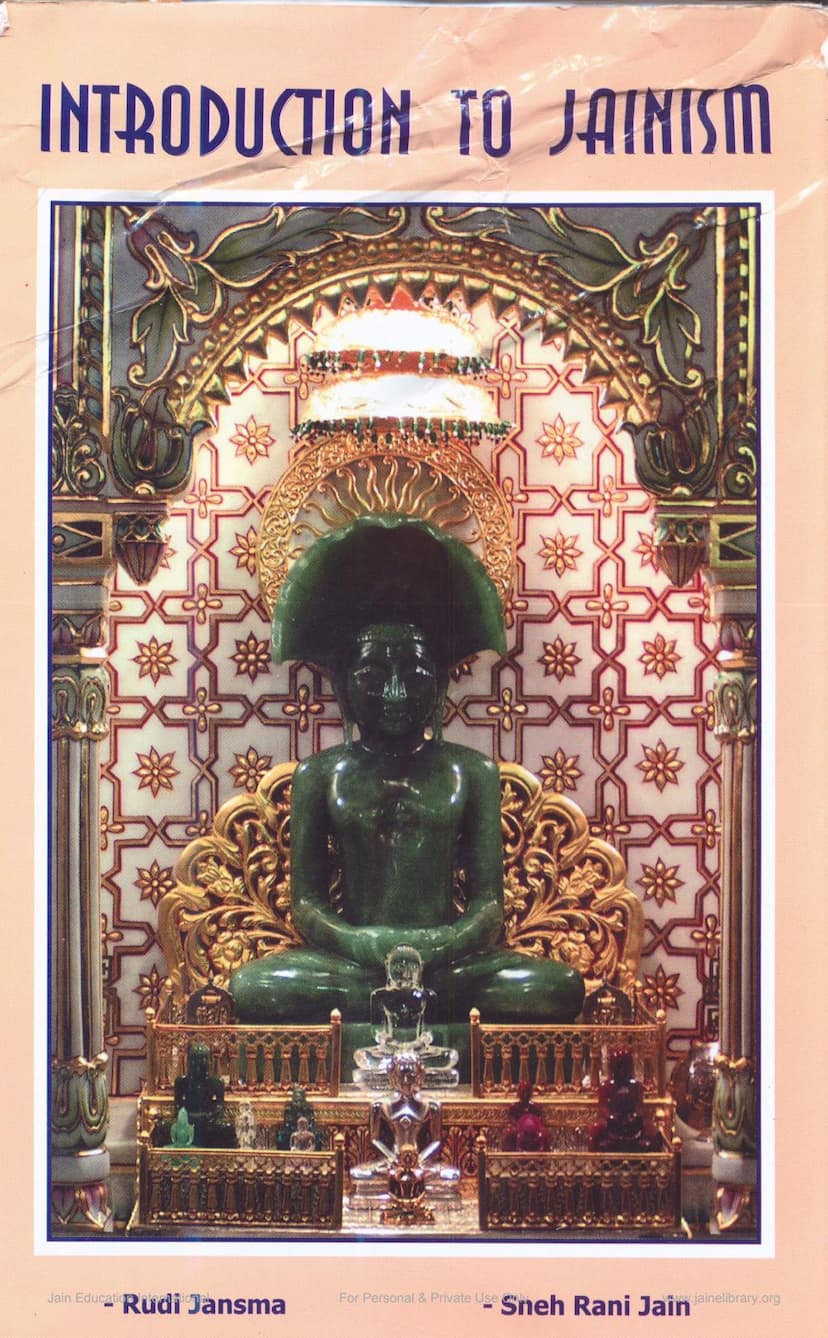Introduction To Jainism
Added to library: September 1, 2025
Loading image...

Summary
"Introduction to Jainism" by Rudi Jansma and Sneh Rani Jain is a comprehensive exploration of the Jain religion and philosophy, aiming to make its tenets accessible to a wider audience, particularly in the Western world. The book highlights Jainism's emphasis on a simple, ethical lifestyle centered around non-violence (ahimsā).
Key aspects of Jainism presented in the book include:
- Rejection of a Creator God: Jainism does not believe in a creator deity but affirms that every being possesses divine potential within its essence.
- Tirthamkaras: The teachings of Jainism have been transmitted through 24 Great Teachers, or Tirthamkaras, with Lord Mahavira (living around 2500 years ago) being the last.
- Path to Liberation: The ultimate aim of Jainism is the liberation of the soul through "right insight, right knowledge, and right conduct." This path aims to purify the soul by preventing the inflow of negative karma.
- Detailed Karma Theory: Jainism offers an extensive and systematic analysis of karma, categorizing it into 148 types with numerous subdivisions. This theory is presented as distinct from fatalism, emphasizing a cause-and-effect relationship.
- Broader View of Life: Jain biology extends beyond commonly understood life forms to include invisible intelligent beings, all of whom play a role in the natural order.
- Indus Script and Art: The book delves into the interpretation of the Indus script through a Jain lens and explores Jain art and archaeology, suggesting a deep historical connection between the Indus Valley civilization and Jainism.
- Ahimsā (Non-violence): This is presented as the central doctrine, encompassing not only physical non-violence but also verbal and mental non-violence. It extends to all sentient beings, including plant life and the environment. The book highlights Jainism's detailed approach to preserving all life forms and its profound environmental consciousness.
- Active Compassion: Jainism emphasizes practical compassion, evident in the community's numerous charitable institutions, hospitals, and animal care centers. Mahatma Gandhi is cited as a modern proponent of ahimsā influenced by Jain principles.
- Two Main Sects: The book details the distinction between the Digambaras ("sky-clad") and the Svetāmbaras ("white-clad"), discussing their differing views on asceticism, dress, and the role of women in achieving liberation.
- Influence and Universality: Jainism's principles of non-violence and tolerance are seen as having touched a universal keynote that resonates across various religions and cultures. Concepts like karma are explored in relation to similar ideas in other traditions, such as the Scandinavian "Orlog" and the Arabic "Jihad."
- Modern Relevance: The book discusses how modern Jains engage with contemporary issues, emphasizing the universal applicability of their ethics and their approach to educating children about spiritual principles. The Anuvrat movement is highlighted as an example of Jainism's impact on modern society.
- Cosmology: The Jain understanding of the cosmos is described, including its division into loka (the knowable universe) and aloka (non-universe), and the hierarchy of hellish, middle, and upper worlds, culminating in Siddhaloka for liberated souls.
- Yoga and Meditation: Jain yoga is presented as an inward-focused discipline aimed at the purification and liberation of the soul, distinct from Western interpretations of yoga. The importance of vegetarianism and specific meditation techniques for spiritual development is emphasized.
- The Fourteen-Fold Path to Freedom (Gunāsthānas): This spiritual progression outlines the stages of a soul's journey towards liberation, marked by increasing insight, self-control, and the shedding of karmic matter.
- Personal Experiences: The author, Rudi Jansma, shares his personal journey of encountering Jainism, visiting holy sites, and interacting with Jain monks and scholars. These experiences provide a rich anecdotal dimension, offering insights into the practical application of Jain philosophy and the lives of its adherents, including the rigorous practices of the Digambara monks.
- The Story of Bahubali: The book recounts the story of Bahubali, son of the first Tirthamkara Rishabha, who achieved liberation through intense penance, serving as a significant example for Jains.
- Indus Valley Civilization Connection: The book proposes a strong connection between the Indus Valley civilization and Jainism, suggesting that the Indus script and art hold significant Jain philosophical and historical messages.
In essence, "Introduction to Jainism" aims to present Jainism as a profound and ancient tradition that offers timeless wisdom on ethics, spirituality, and the interconnectedness of all life, providing a practical path for self-improvement and universal harmony.